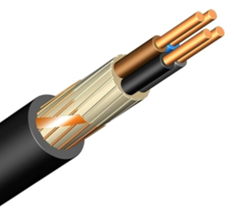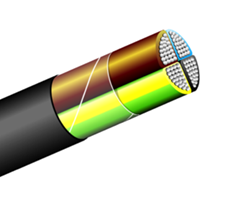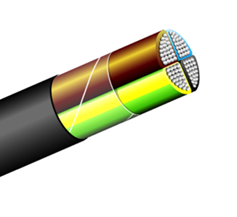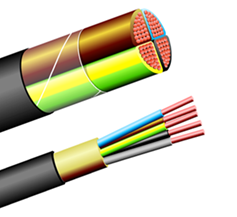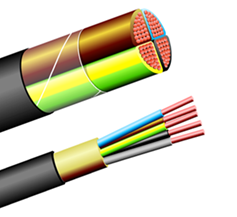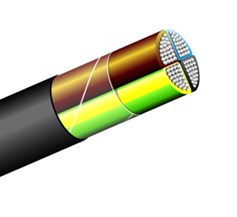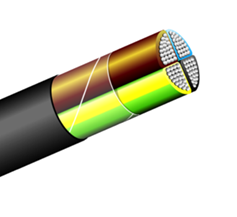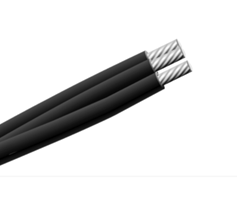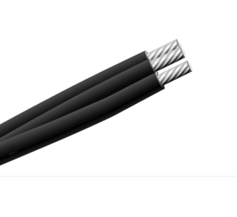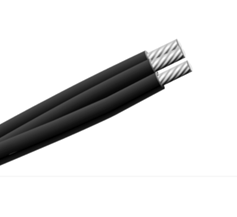By the way of their laying, power distribution cables can be either underground – laid in the ground or overhead – in overhead power distribution networks.
In underground power cables the conductor is copper (Cu) and aluminum (Al), and it can be of a round or a sector shape with the addition of a concentric conductor – a shield consisting of concentrically laid copper wires and a copper tape.
As the insulating material for underground power cable, PVC and PE are used most often, in case of higher operating temperature of conductors; XLPE is used, while for the cables with special properties in case of fire, low smoke zero halogen (LSZH) compounds are used, which have a low emission of smoke, with non-toxic and non-corrosive gases generated during combustion.
As the sheathing material for underground power cables, PVC and PE are used most often, and for the cables with special properties in case of fire, low smoke zero halogen (LSZH) compounds are used, which have a low emission of smoke, with non-toxic and non-corrosive gases generated during combustion.
As the conductor for overhead power cables or self-supporting cable bundles, aluminum (Al) is used, while for the self-supporting function, aluminum alloys (ALMgSi) are used, and for insulation, exclusively XLPE.


